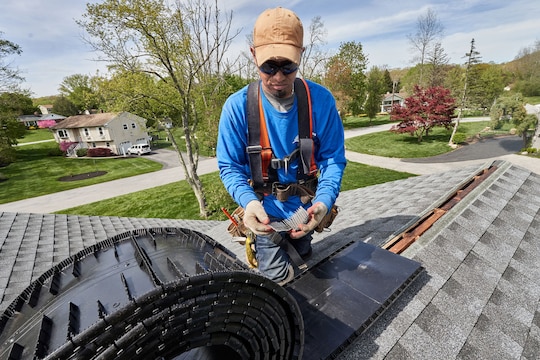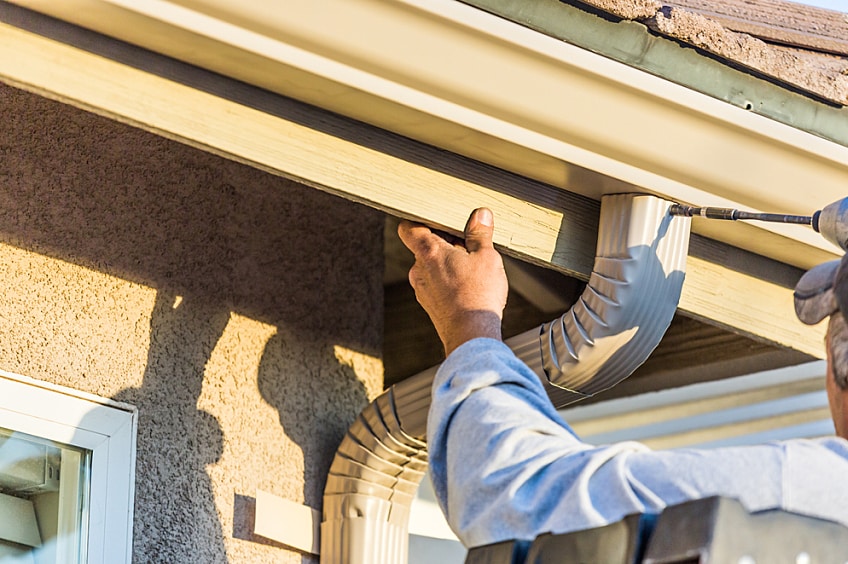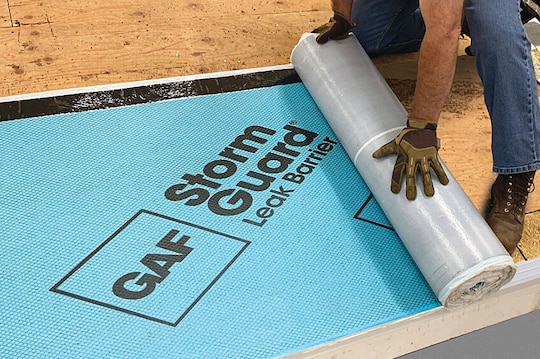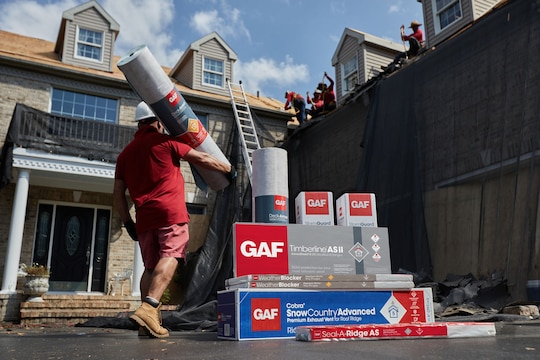
When it's time for a new roof, you have all sorts of decisions to make, such as the type of materials to use and the shingle color that will best complement your home's exterior. If the house has a gutter system, you'll also have to consider whether to remove gutters when replacing the roof or simply protect them while the work is being done.
Gutters don't have to be removed during a roof replacement, but there are some benefits to having them out of the way, so it's up to you. Here are the key details to know and some things to consider before making your choice.
How a Roof Replacement Can Affect Your Gutters
Whether your gutters should be removed prior to roofing work depends on several factors, including their age, condition, and placement, as well as the construction of your home's roof.
A roof replacement requires the removal of the existing materials and installation of a completely new roofing system. With so much work involved, it might be a good idea to remove gutters when replacing the roof so that they don't hinder progress or get damaged in the process. If the gutters stay on during work, they could get clogged with waste as it's being removed and potentially make it harder for workers to safely maneuver while on the roof.
Another factor to weigh is the roof's architecture. If your roof has portions with different slopes and pitches, you should carefully consider the gutters in those areas and whether they can stay on during replacement work.
Finally, if your gutters are old and have seen your house through years of sunshine and storms, you may decide to upgrade them and get new, higher-capacity gutters in a different style or color. Swapping in the new components (after the other roof work is finished) can enhance the effectiveness of your gutter system and help brighten the exterior appeal of your home.
These considerations are all good things to talk through with a residential roofing contractor, as they can help provide insights and personalized guidance based on your situation.
Benefits of Removing Gutters When Replacing the Roof
A roof replacement provides you with a great opportunity to ask roofing professionals for their thoughts on your gutter system. They can easily take a look at your gutters while they're on the roof and give you their opinions on the health of your system, as well as any portion should be removed to accommodate the roof work.
These are a few of the benefits you couple potentially enjoy by removing your home's gutters before a replacement project.
Ability to Inspect Condition of System
If your roofing contractor finds cracks, rust, or open seams in your gutter system—or other issues such as supports pulling away from the house—they'll likely recommend replacing the gutters to enhance the efficiency of your home's roofing system. This can help ensure water and debris is diverted off the roof, potentially avoiding water damage.
Supports Fast and Easy Installation
It can be tricky to work around gutters without damaging them, even for the most skilled roofer. Because gutters are often connected directly to the roof, damage can occur when workers tear off old shingles. Having easy access to the entire roof ensures a smoother installation because when roofers have to work around existing gutters, it's harder to align shingles to the roof pitch and get the right fit.
Facilitates Related Roof Work
Removing the gutters might be needed to install ice and water shields—which help control the direction of dripping water—and allows roofers to better inspect the fascia board that supports the gutter system. If there's water damage or rot, your roofer will be able to address it.
Keeping Your Gutters in Good Working Order
If your gutter system is in great shape, choosing to remove it before a roof replacement work can help ensure it's protected from harm, saving you the time and money it'd cost to repair or replace components that could potentially get damaged while the work is being done.
That said, it is possible to leave them in place and not remove gutters when replacing the roof. If you choose not to remove them, the roofers can carefully cover them and avoid leaning ladders directly against them. By taking care when laying shingles along the roof edges, workers can further help to prevent damage.
Once the new roof is in place, your roofing contractor should clear out any debris from your gutters and conduct a quick test to make sure they're in good working order. Because they're an essential element of your home's roofing system, it's important they function properly. Otherwise, your new roof could become damaged.
While they will remove debris caused by their work, roofers won't clear your gutters of leaves or other clogs. As the homeowner, you're in charge of cleaning your gutters and conducting routine maintenance. You can outsource that work to other professionals, however.
So Should Gutters Be Removed for a Roof Replacement?
Ultimately, it's your decision whether to remove gutters when replacing the roof. A certified roofing professional will inspect your roof, check the integrity of your gutters and then share recommendations regarding whether they need to be covered, removed, or even replaced. From there, it's your choice to make.
Looking to discuss your options with an experienced roofing professional, so you can make an informed decision? Reach out to a GAF-certified roofing contractor* near you.
*Contractors enrolled in GAF certification programs are not employees or agents of GAF, and GAF does not control or otherwise supervise these independent businesses. Contractors may receive benefits, such as loyalty rewards points and discounts on marketing tools from GAF for participating in the program and offering GAF enhanced warranties, which require the use of a minimum amount of GAF products. Your dealings with a Contractor, and any services they provide to you, are subject to the GAF Contractor Terms of Use.



